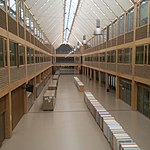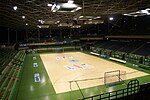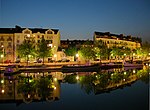Saint-Sébastien-Pas-Enchantés station
Pages with no open date in Infobox stationRailway stations in Loire-AtlantiqueTER Pays de la Loire

Saint-Sébastien-Pas-Enchantés is a railway station in Saint-Sébastien-sur-Loire, Pays de la Loire, France. The station is located on the Nantes-Saintes railway. Since 15 June 2011 the station is served by a tram-train service between Nantes and Clisson operated by the SNCF. The following services currently call at Saint-Sébastien-Pas-Enchantés: local service (TER Pays de la Loire) Nantes - Clisson
Excerpt from the Wikipedia article Saint-Sébastien-Pas-Enchantés station (License: CC BY-SA 3.0, Authors, Images).Saint-Sébastien-Pas-Enchantés station
Rue du Docteur Paul Michaux, Nantes
Geographical coordinates (GPS) Address Nearby Places Show on map
Geographical coordinates (GPS)
| Latitude | Longitude |
|---|---|
| N 47.206666666667 ° | E -1.5108333333333 ° |
Address
Rue du Docteur Paul Michaux
44230 Nantes
Pays de la Loire, France
Open on Google Maps










